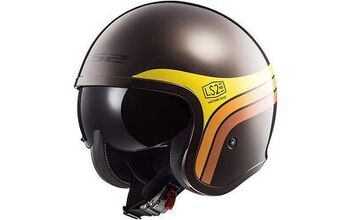How To Measure For A Motorcycle Helmet
When it comes to motorcycle safety, a helmet is the most important piece of gear you can invest in. A helmet that fits properly not only protects your head in case of an accident but also ensures a more enjoyable riding experience. One of the fundamental steps in selecting the perfect helmet is measuring your head accurately. But how do you know if you’re getting the right size? Let’s go through the steps together.
Read more: Motorcycle.com Mega Helmet Shootout
Importance of a Proper Helmet Fit
Before delving into the measuring process, understanding the significance of a properly fitting helmet is essential. A well-fitted helmet sits snugly on your head without causing discomfort or pressure points. It should not move excessively or feel loose, as this could compromise its effectiveness in the event of a crash.
Follow these steps to accurately measure your head for a motorcycle helmet:
Step 1: Measure your head
Use a soft measuring tape or a rope to measure the circumference of your head about one inch above the eyebrows, around the widest part at the back of your head, and around the forehead. Make sure the tape is snug but not too tight. It should feel comfortably secure around your head without being overly constricting. Record the measurement in both inches and centimeters.
Tips for Accurate Measurement
- Measure Multiple Times: Repeated measurements ensure accuracy and reliability.
- Use a Mirror: If you're measuring alone, use a mirror to check that the tape is positioned correctly around your head.
- Ask for Assistance: If possible, have a friend or family member assist you to ensure the tape is straight and positioned accurately.
Step 2: Determine your head shape
The shape of your head plays a crucial role in selecting a properly fitting motorcycle helmet. All helmet manufacturers design their lids to fit a specific head shape. These often range across three primary designations - long oval, intermediate oval, and round oval. Here’s how to determine your head shape:
- Long Oval: Shaped for a head that is longer front-to-back (from forehead to the back of the skull) than it is side-to-side (ear to ear).
- Intermediate Oval: Shaped for a head that is slightly longer front-to-back than it is side-to-side. Most motorcycle helmets will fall into this category as it is the most common head shape; if a helmet does not state its shape, this is usually it.
- Round Oval: Shaped for a head that has almost identical front-to-back and side-to-side measurements.
Once you know your head shape, it is easier to filter the enormous selection of available motorcycle helmets down to a smaller, more appropriate list of those that will fit your head.
Step 3: Find your size
Now that you have your head measurement and shape, it’s time to find your size. Compare your measurement with the sizing chart of the helmet you are interested in and find your size. Keep in mind that different brands may have different sizing charts, so be sure to check the chart for the specific helmet you are interested in.
Step 4: Try on the helmet
Once you have your size, it’s time to try on the helmet. Check for snugness, comfort, and movement. The cheekpads should be fairly tight (but not uncomfortably tight) on your cheeks at first because they will break-in over time. Wear the helmet for a while at home to see if there are any hot spots or pressure points that might bother you. This is also why it’s a good idea to try on helmets in person, if possible, instead of buying them blindly online. Store employees should be able to assist you in making sure the helmet is the right fit for you.
Step 5: Exchange the helmet if it doesn’t fit
If you’re not happy with the fit of your helmet, don’t worry. Some online retailers offer a fit guarantee, which allows you to exchange the helmet for a different size or model if it doesn’t fit you well as long as all of the tags and stickers are in place. Do note, while there are exceptions as mentioned above, many retailers will not take a helmet back after you purchase it. It’s too difficult to determine whether or not the helmet has been compromised in any way.
In conclusion, choosing the right motorcycle helmet is crucial for your safety on the road. By following these simple steps, you can ensure that you get the right size and fit for your head shape. Remember, a properly fitting helmet can make all the difference in the event of an accident. Stay safe out there!
We are committed to finding, researching, and recommending the best products. We earn commissions from purchases you make using the retail links in our product reviews. Learn more about how this works.
Become a Motorcycle.com insider. Get the latest motorcycle news first by subscribing to our newsletter here.
Suchi is the voice behind the handlebars as Motorcycle.com's latest addition. By day, she fuels her passion through creative marketing endeavors, and contributes her free time to Motorcycle.com
More by Suchi Vora































Comments
Join the conversation